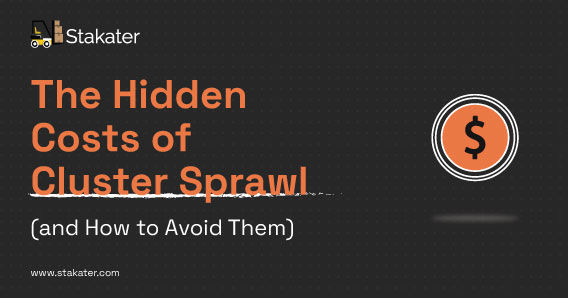Secure, Scalable Kubernetes for All Your Teams - With Just One Cluster
- Rasheed Amir
- Aug 6
- 2 min read
Are you running Kubernetes for multiple teams - and starting to wonder if each one needs its own cluster? Before we commit to a complex and costly multi-cluster setup, it’s worth considering a better option: secure, scalable multi-tenancy within a single Kubernetes cluster.
In this blog, we’ll look at how we can use Stakater Multi-Tenant Operator (MTO) to support multiple teams securely and efficiently - without the burden of cluster sprawl.
The Problem with Multiple Clusters
A lot of organizations default to spinning up one Kubernetes cluster per team, department, or project. It might seem like a clean way to separate things, but it quickly creates bigger problems:
High cloud infrastructure costs from multiple control planes and underutilized nodes
Extra operational overhead managing upgrades, security, monitoring, and tooling across clusters
Inconsistent policy enforcement, which opens up compliance gaps and inefficiencies
Developer frustration from dealing with different processes in each environment
The result? A fragmented, costly Kubernetes setup that slows down innovation.
The One-Cluster Strategy
A more efficient solution is to run all our internal teams on a single Kubernetes cluster - using namespace-based multi-tenancy.
This approach gives us:
Centralized governance
Lower costs and better resource utilization
Standardized toolsets and configurations
Streamlined monitoring and security
The key to making it all work? Automation, policy enforcement, and strong isolation - and that’s exactly where Stakater MTO comes in.
Introducing Stakater Multi-Tenant Operator (MTO)
Stakater MTO is a Kubernetes-native operator that helps platform teams create secure, isolated, and policy-compliant environments - all within a shared Kubernetes cluster.
With MTO, we can:
Provision new tenants (teams or projects) as namespaces with a simple CRD
Automatically apply RBAC, NetworkPolicies, ResourceQuotas, and Pod Security
Onboard teams in minutes using consistent templates
Integrate smoothly with GitOps tools like ArgoCD and secrets managers like Vault
Ensure visibility and auditability at the tenant level
How It Works
MTO provisions tenants using custom resource definitions (CRDs). Each tenant gets:
A dedicated namespace
Scoped access through RBAC
Network isolation
Pre-applied resource limits and security policies
Optional integration with monitoring, logging, and backup tools
Platform teams keeps full control, while development teams get the autonomy they need - all within a secure environment.
Real-World Use Case
Let’s say we’re a mid-sized enterprise with the following teams:
Mobile App
Backend APIs
Data Science
QA & Testing
DevOps
Instead of provisioning five separate clusters, we can:
Run all teams in a single cluster using MTO
Keep everything isolated and secure
Enforce consistent policies and toolsets
Cut infrastructure and management costs by 30–50%
Final Thoughts
We don’t need dozens of clusters to run Kubernetes at scale. With Stakater MTO, we can enable secure, scalable Kubernetes for all our teams - using just one cluster.
It’s the modern way to deliver Kubernetes-as-a-Service across the organization.
Ready to consolidate your Kubernetes strategy? Let’s talk.


